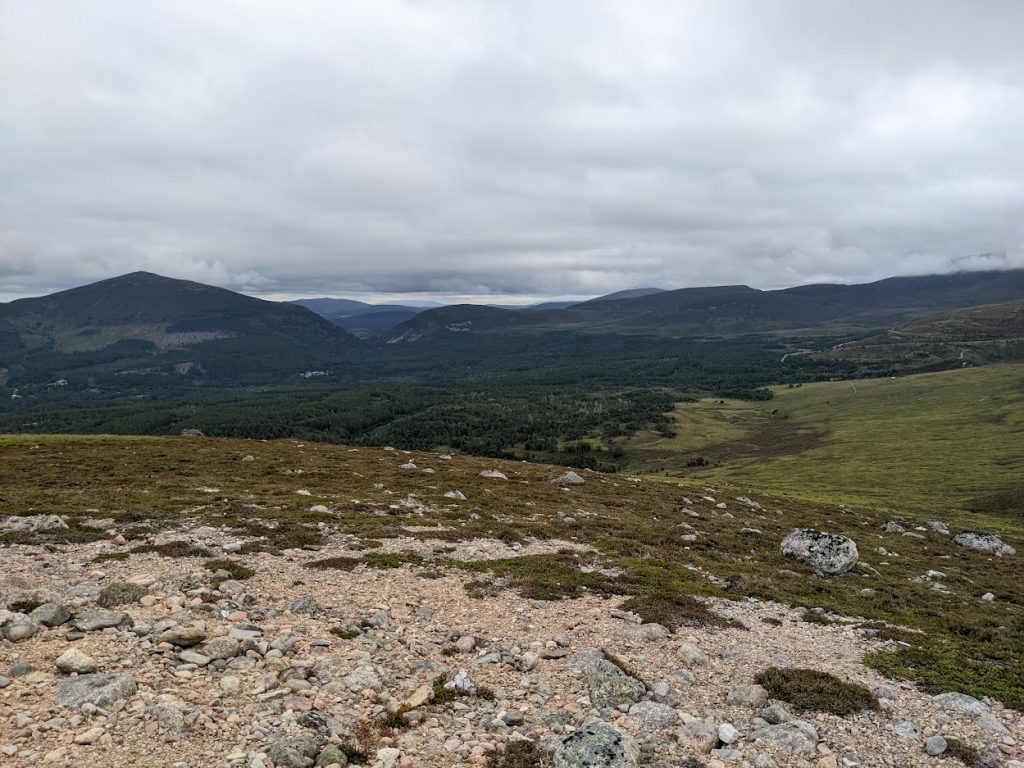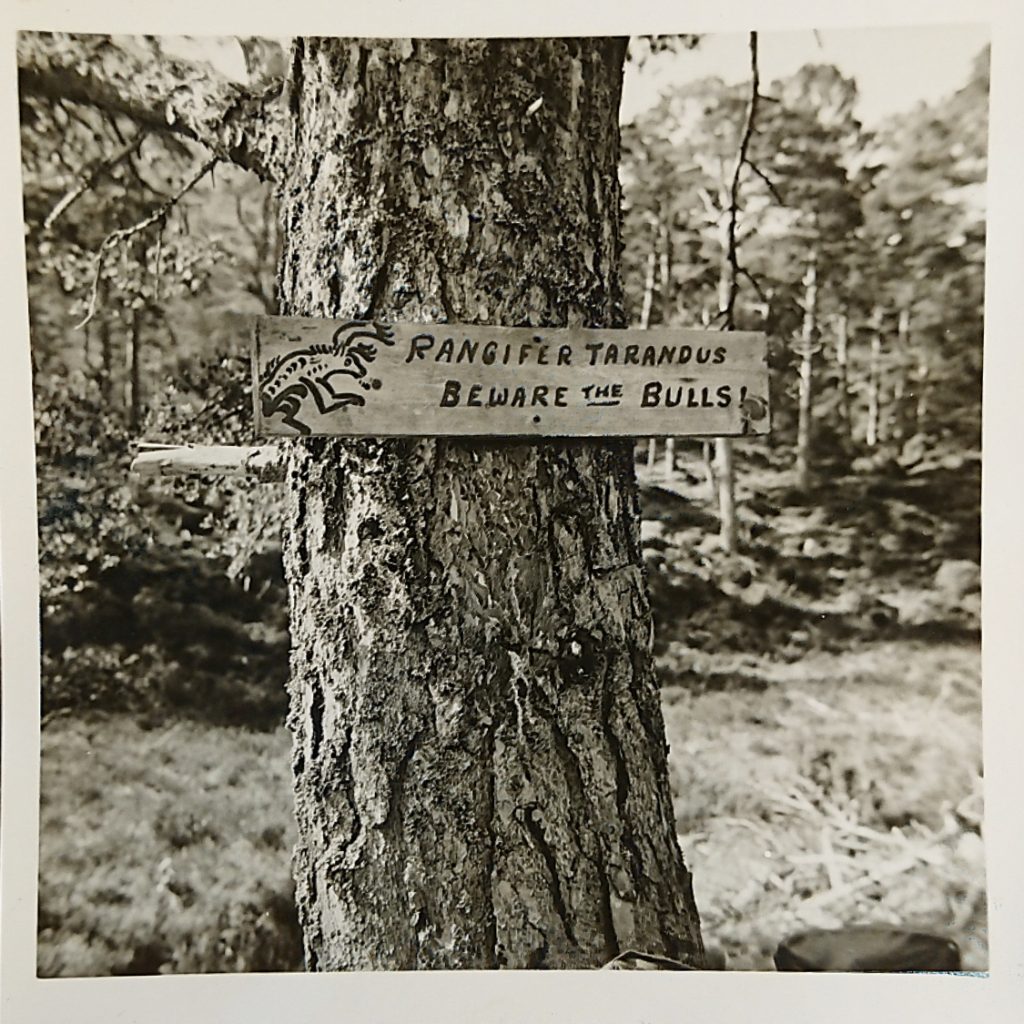Being the most recent person to start working at the Reindeer Centre I am experiencing the day-to-day workings of the Centre throughout the seasons for the first time. I thought I would write about one of my favourite “firsts” to date, which is finding the first calf to be born for the 2022 season. It was a beautiful day at the tail end of April, which happened to be my first day back at work after my usual two days off and Andi’s first day back at work after a holiday. We started our usual morning routine and set off from the house to head up to the enclosure to check on our pregnant cows and feed them, upon feeding the cows we realised that one reindeer was missing, so we grabbed our calving bag which includes: feed for the mother, spot on and antibiotic blue spray for the calf’s naval and made a start on searching the enclosure. For anyone that hasn’t been to our enclosure it is a vast amount of space to search, the perimeter line is 8km in length alone! The missing reindeer was the lovely, four year old, Dante.
We headed along the top ridge of the enclosure to check a well-known calving area up there, but the missing reindeer was nowhere to be seen so we continued climbing to the summit of Silver Mount in search of Dante. Keeping with the theme of many “first” experiences, this was also my first time being on and seeing the summit of Silver Mount, which has glorious views of the Northern Corries, Loch Morlich and down onto Glenmore. Luckily for us, Dante was also at the summit of Silver Mount.


With the easy part over we had to try and see whether Dante had calved or not and for the untrained eye this was a lot harder than it sounds. We could see that the reindeer was focusing on a specific ginger looking spot, but was this a new-born calf or a rock? A question that all herders ask themselves on a regular basis when looking for full grown reindeer, never mind a tiny calf! We were lucky though and the ginger mound began to move which confirmed that we had officially found the first calf of the season! Andi headed over to feed the mother, treat the naval of the calf and give spot on to give it protection from those dreaded ticks. Once we had checked that all was ok we headed back down to reindeer house to share the amazing news that our calving season had begun!


At the end of May Dante and her one month old calf headed out to the hills for the summer, along with around half of our other mums and calves. We caught up with them a few times whist they roamed freely in the hills, both mum and daughter seemed to have a great summer as they were always in excellent condition. The pair are now back in our hill enclosure for the autumn where we’ll begin to train Dante’s calf to wear a halter and get to know her personality. Hopefully she’ll grow up to be a big strong girl like her mum, and big sister Mangetout.


Amy





































